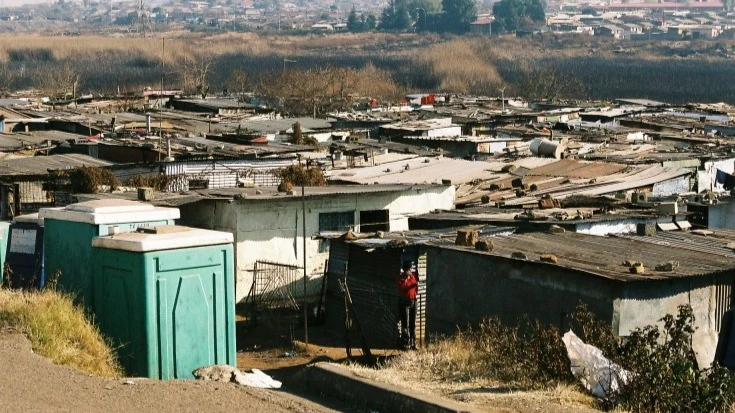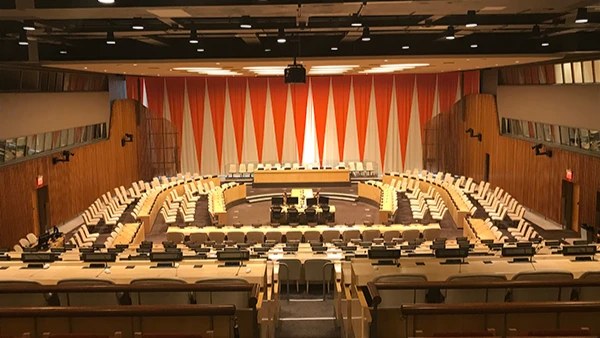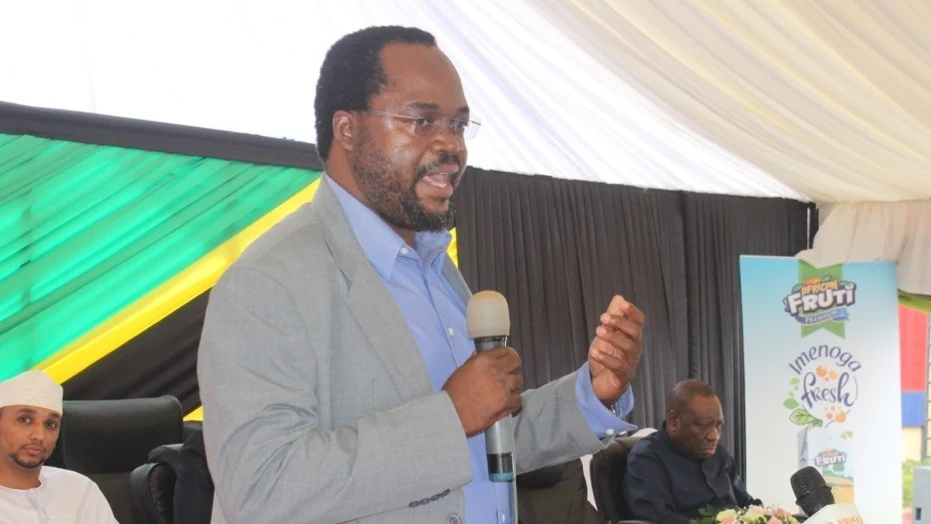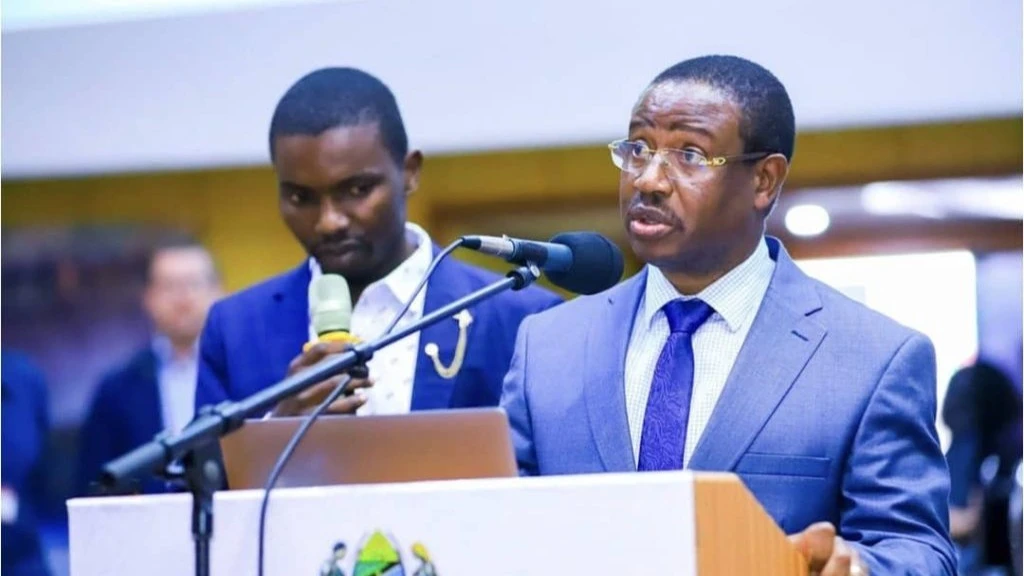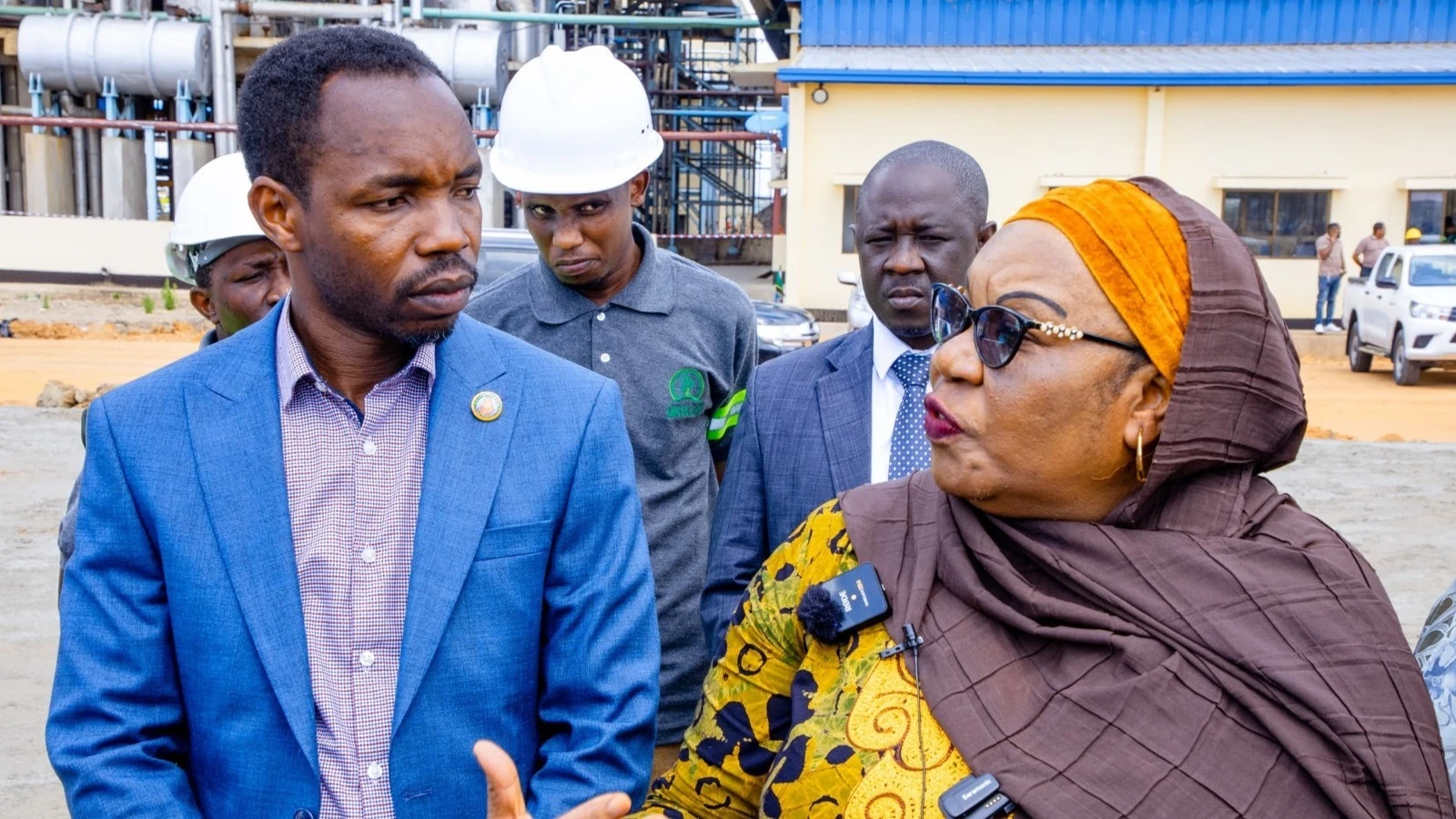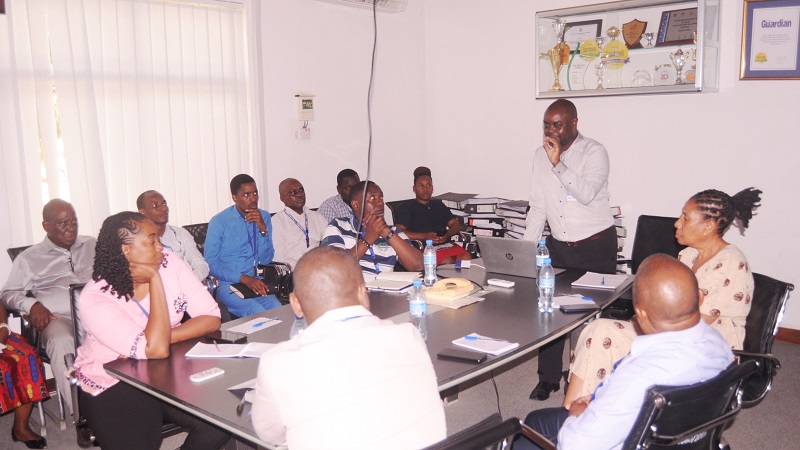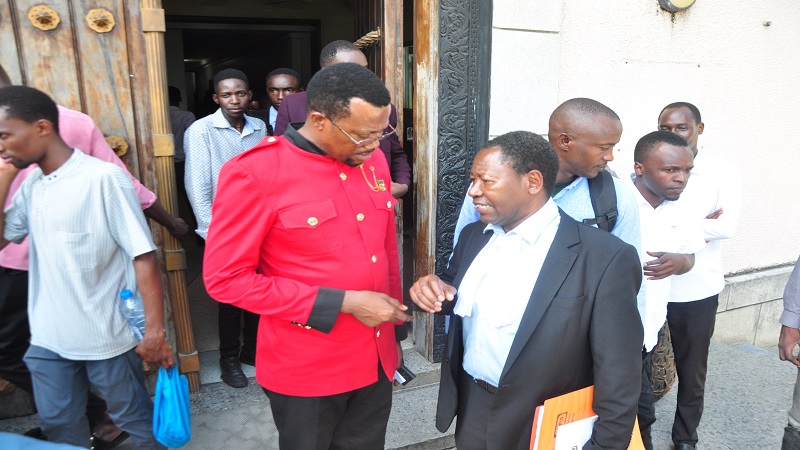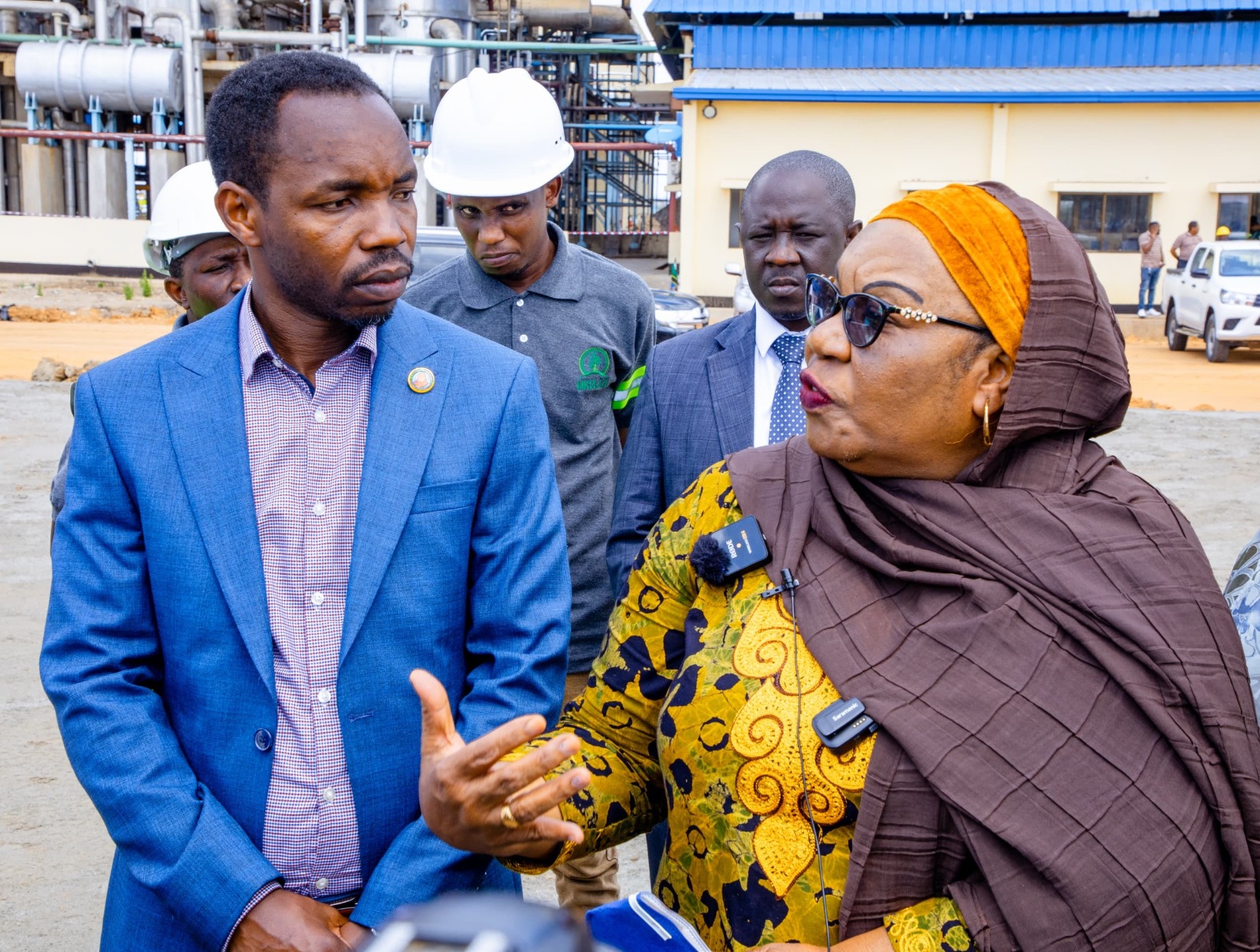Zai farming technique transforms soil fertility in Cameroon’s North Region
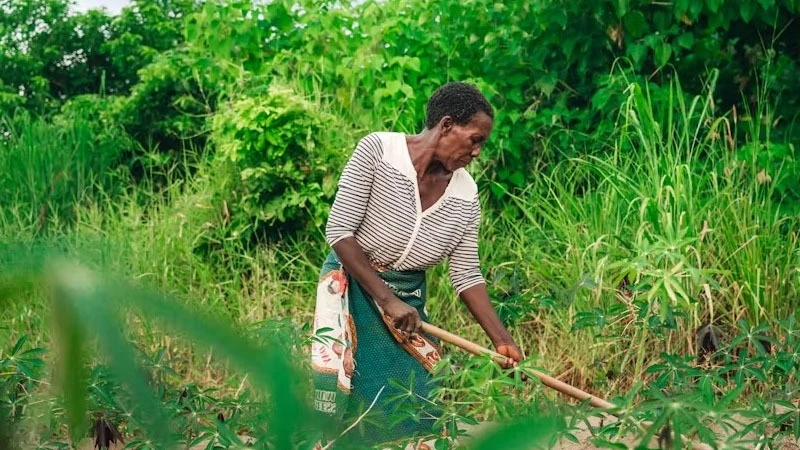
OURO Andre, a village in the Lagdo sub division in the North Region of Cameroon, appears desolate on this rainy morning as farmers set out early to till the soil and plant crops. Goats munch fresh grass, bellowing to break the quiet in this 700-person village sandwiched between hunting interest zones (prohibited areas) 7 and 14.
The people of Ouro Andre own patches of land on the fringes of Bénoué National Park, cultivating corn, maize, cotton, sorghum and millet and raising goats and sheep.
One of these famers, 48-year-old Pierre Adamou, father of five, sets out for his farm, 5 kilometers (3 miles) away, with a machete in one hand, a sack of maize in the other and a massive hat pulled tightly over his chin to protect himself from the sun’s direct rays. It is the rainy season, and after preparing the field for two weeks early in May, it is time to plant corn. But Adamou is also doing something a little differently. He’s using the Zai technique to restore his soils.
Zai, also known as tassa, is a traditional technique imported from West Africa to restore degraded soils leading to farmers struggling with low harvests. The technique consists of digging holes 70-80 centimeters (27-31 inches) apart, 20 cm (8 in) deep and 25 cm (10 in) wide to allow compost, grain and rainwater to mix in the same hole and prevent erosion on slopes, Bonne Gissata, a project lead with Forests and Rural Development (FODER) explains.
Currently, Adamou employs the Zai technique and composts manure on half a hectare of his farm. A member of the Nangam Djoungo cooperative, he is one of the 247 farmers who have embraced the Zai technique as well as composted manure on their farms. Adamou says the Zai technique helps “against dryness, lack of rainand retains humidity in the soil.”
“We inherited the farmlands from our parents; they have been over exploited, and the soil is now poor. I have seen that the yield is also good with the Zai technique, so I am adopting it, ” Adamou said.
Before employing this technique three years ago, Adamou harvested 2-3 bags of maize from half a hectare using chemical fertilizers.
“With the Zai technique, I can see the difference; the yield from half a hectare has increased from three bags to about seven,” Adamou explains. “My life and many activities have changed. I pay school fees for my children, buy clothes, take care of medical bills, and invest in rearing goats and sheep.”
Adamou says chemical fertilizers are expensive, ranging from 30,000-35,000 Central African francs (about $50-60) for a bag of 50 kilograms (110 pounds).
The Zai technique is being used to aid the region, which is undergoing extreme pressures. With the insurgence of Boko Haram, a radical Islamic sect hostile to Western influence, in Cameroon’s Far North Region, the population has been fleeing the region, putting pressure on Benue National Park. Migrants cut down trees in search of new farmland, encroaching into the park and farming on wildlife corridors. A study in the Environmental Challenges Journal in 2021 identified nine types of human activities, including agriculture, threatening wildlife in the park.
Repairing land degradation around Bénoué National Park
Bénoué National Park is a mix of grasses and scattered trees, and a gallery forest including African mahogany (Afzelia africana), shea trees (Vitellaria paradoxa) and various species of acacias.
Created in 1932, Bénoué became a national park in 1968; it was designated as a Biosphere Reserve in 1981 to protect the diverse ecosystems and wildlife of the region. The reserve is approximately 180,000 hectares (445,000 acres).
Hippopotamus (Hippopotamus amphibius) basking in the Benue River, bonnet macaques (Macaca radiata) hopping on tree branches and guinea fowl (Numida meleagris) crossing the road are common spectacles in the park, along with savanna elephants (Loxodonta africana), leopards (Panthera pardus), lions (Panthera leo), monkeys and antelopes. The park is a birdwatcher’s paradise, with more than 300 bird species recorded, including the black-crowned crane (Balearica pavonina) and the Egyptian plover (Pluvianus aegyptius). Kingfishers, songbirds and red-throated bee-eaters (Merops bulocki) thrive.
Northern Cameroon is semi arid and dry, with less than 100 mm of rainfall (4 inches) per month. Over the last two decades, the demand for farmland, pasture and firewood for cooking has increased at the expense of forests and grasslands.
The large human and livestock populations, over cultivation and overgrazing, the growing demand for fuelwood supplies, the agricultural system and poor rangeland management are at the forefront of the environmental problem of human-made desertification in northern Cameroon.
The Cameroon government is committed to fighting desertification and climate change in line with the United Nations Framework Convention on Climate Change, the United Nations Convention to Combat Desertification and the Convention on Biological Diversity. Through the AFR100 and Bonn Challenge, Cameroon committed to begin restoration of 12,062,768 hectares (about 30 million acres) by 2030; 80% of degraded landscapes are believed to be in the three northern regions.
On behalf of the Cameroon government, the World Wide Fund for Nature (WWF) conducted a restoration opportunities assessment (ROAM) on the peripheries of Bénoué and Faro National Park, also in northern Cameroon, and their technical operational units in 2022. The evaluation showed that 26,029 hectares (about 64,000 acres) of degraded landscapes needed restoration.
“The area around Bénoué and Faro parks is 89.59% agricultural lands, 10.11% agroforestry and 0.3% appropriate for woodlands, densely populated, water-stressed with river banks suffering strong erosion, low soil organic matter and water retention potential, and characterized by impoverished and degraded agricultural soils,” says Peter Mbile, a former WWF senior field program coordinator. Indigenous tree species such as barwood tree (Pterocarpus erinaceus), African mahogany and the sausage tree (Kigelia africana) are selectively overexploited here for fuel, timber, furniture and fodder.
Several projects by the government and NGOs are being implemented to restore land in the northern regions. For example, EcoNorCam is a four-year project funded by the European Union and executed by a consortium of organizations, including FODER.
Gissata with FODER says that EcoNorCam has introduced communities adjacent to Bénoué National Park to agroforestry and agroecology practices to help locals in the park’s periphery preserve the environment and stabilize the agricultural fronts, restore degraded soil and do more to fertilize land.
Zai technique: Changing livelihoods, protecting bénoué National Park
FODER has embraced the Zai technique. Following meetings on various agroecology techniques, FODER created a demonstration farm where they planted crops using the Zai technique to teach farmers, Gissata says.
“Before now, we cultivated our farms using chemical fertilizers and had no idea of the existence of the Zai technique until FODER introduced it to farmers. Even when there is no rain, the soil maintains humidity for two weeks. The harvest was poor before, but now, with Zai, the yield is higher,” Aiessatou, president of the Jilkakak cooperative and expert on the Zai technique, who goes by a single name, tells Mongabay.
Like Pierre, in Ouro Andre village, Aiessatou is seeing a boom in her yield.
“I used to harvest about 10 bags of corn using chemical fertilizer from a hectare; now, with the Zai technique, I harvested about 30 bags of corn last year from the same farmland. The money helps my family meet our basic needs,” Aeissatou tells Mongabay.
Aiessatou also uses compost on half a hectare of land, and the harvest is good. She uses biopesticides with garlic and other ingredients to rid her farm of pests, and the results are encouraging.
Guissata says more than 300 hectares (740 acres) of land have been restored around Bénoué National Park through Zai and compost manure over the last three years.
However, not all farmers in the area have adopted the Zai technique. Blaise Djoweh, 46, still uses chemical fertilizers on his 2-hectare (5-acre) land. “I just learned about the Zai technique, and I doubt adopting the technique. I can buy chemical fertilizers, and it is OK for me. The Zai technique requires a lot of physical effort.”
Some interviewed farmers had the same view: The Zai technique requires additional physical work. Farmers search for cow dung, leaves and other materials to make compost manure, then transport it to the farms when ready. Digging the holes, adding manure to a large farm of about 10 hectares (25 acres) and planting is a hefty task, Djoweh tells Mongabay.
As a solution to the laborious Zai technique, FODER has helped the farmers organize themselves into cooperatives to farm in groups, tilling one farm at a time for the members to lessen the burden on individual farmers.
Michael Zirtet Jourmbi, a researcher at the Institute of Agricultural Research (IRAD) in Garoua, says Zai is “efficient, but it is unsustainable because it requires hard work.”
Research is also underway to restore degraded land in Cameroon, particularly in the northern regions. According to Zirtet Jourmbi, researchers have been able to use innovations to improve several traditional techniques to restore the soils. Zai is one of the conventional techniques, and it includes ameliorating biochar. A study published in the Open Journal of Soil Science on ReviTec technology says it is another solution for restoring soils.
The Cameroon government has designed a national restoration strategy and outlined projects, especially in the northern regions of Cameroon. Through the projects, the state has suggested the possibility of taking resources from a special account on environmental issues to boost its efforts, Bring, director of conservation and management of natural resources at the Ministry of Environment and Rural Development, said.
The ministry has yet to evaluate the amount of land restored so far.
According to Bring, the challenge is integrating the work of the government, NGOs, researchers and all the stakeholders to create a more productive and ecologically sustainable Cameroon.
Top Headlines
© 2024 IPPMEDIA.COM. ALL RIGHTS RESERVED




